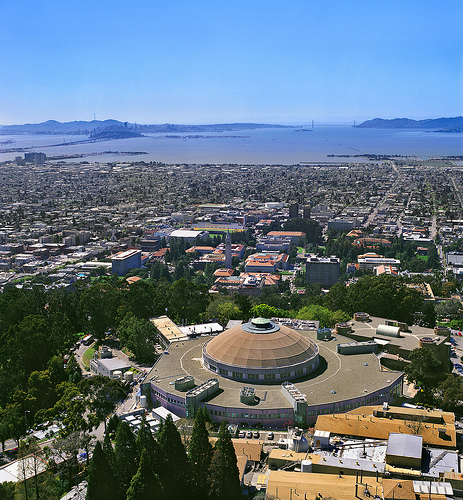There have been some ups and downs and a few growing pains, but as Lawrence Berkeley National Laboratory enters the second year of an initiative to foster better community relations, all parties say the channels of communication are improving.
The Community Advisory Group (CAG) formed by Berkeley Lab in the spring of 2010 has expanded its membership to broaden representation, solicited member input in setting meeting agendas and announced agenda topics for the entire year to allow members more time to study issues and prepare comments.
“The CAG is evolving,” said Sam Chapman, Berkeley Lab’s Manager for State and Community Relations. “The first year was a learning process for us and for people on the CAG. I think it’s improved in the sense that our communications are better. We’re trying to be more responsive to CAG members’ concerns.”
 The group now has 18 members representing a wide range of locales and interests, from Richmond to west Berkeley and from business to labor to health. In keeping with Berkeley Lab Director Paul Alivisatos naming community relations as one of his top priorities, Berkeley Lab established the CAG in order to have an ongoing dialogue with neighbors and other community members about matters of interest, such as physical planning and environmental concerns. “The Lab benefits from having the thoughts and advice of members of the community,” Chapman said. “It helps us to address their concerns and to be better neighbors.”
The group now has 18 members representing a wide range of locales and interests, from Richmond to west Berkeley and from business to labor to health. In keeping with Berkeley Lab Director Paul Alivisatos naming community relations as one of his top priorities, Berkeley Lab established the CAG in order to have an ongoing dialogue with neighbors and other community members about matters of interest, such as physical planning and environmental concerns. “The Lab benefits from having the thoughts and advice of members of the community,” Chapman said. “It helps us to address their concerns and to be better neighbors.”
Meetings are open to the general public and held approximately every two months. “I think it’s to the credit of the Lab that they wanted to open up to this possibility,” said CAG member Phila Rogers who has lived in the hills above Berkeley Lab for 60 years and who worked at the Lab for about 20 years starting in the mid-1960s. “In my fairly long experience at the Lab both as an insider and outsider this is the first time. I think it’s good.”
Rogers and a few other CAG members wrote a letter to Alivisatos last year asking to have more input in the process. Some of the changes were a result of that letter, and at the next meeting Rogers will be the first CAG member to give a presentation, a talk about the protection of Strawberry Canyon, where the Lab is located.
Rebecca Daly, who represents UC Berkeley graduate students on the CAG, agreed that communications have improved in the second year. “I feel the changes they’ve made have helped a lot, like requiring the agenda topics be posted in advance and giving people the opportunity to recommend speakers,” she said. “The first year was more of a feeling out period—what’s going to work and what isn’t—both for the Lab and for the public.”
At the next meeting on July 14 (see CAG website for details), the CAG will hear an update on the Lab’s search for a second campus. The CAG was the first outside group to get the news last September that Berkeley Lab would be launching a search for a second site to consolidate off-site facilities and accommodate future growth. Members had an opportunity to ask questions and provide input on what factors were important for a second site.
In the past relations with neighbors have frayed because they felt left out of the planning process when the Lab moved forward on a major construction project. Every CAG meeting now features an update on current and possible future construction projects. “I like the idea of having a group that tells people what they’re planning ahead of time, before it gets so far along you almost feel like, why bother saying anything,” said new CAG member Chris Adams, a retired UC planner who lives just down the hill from Berkeley Lab. “One of the values of being on it is that it’s an early warning system for me and my neighbors.”
Other topics to be covered at future meetings include fire protection, surface water management and nanotechnology.
Another purpose of the CAG is to help educate the public about Berkeley Lab itself. Although it has been around for nearly 80 years, its activities and goals remain a mystery to some members of the community. “I feel like there’s so much cool wonderful research that goes on here. It’s such an amazing place, and the general public doesn’t really understand what happens here,” said Daly, who does part of her graduate research at Berkeley Lab.
Adds Chapman: “A lot of people think we’re engaged in weapons work, which we are not. So part of the purpose is to demystify the Lab and make it more accessible. I think we’re chipping away at doing that, though it doesn’t happen overnight.”
Additional information: